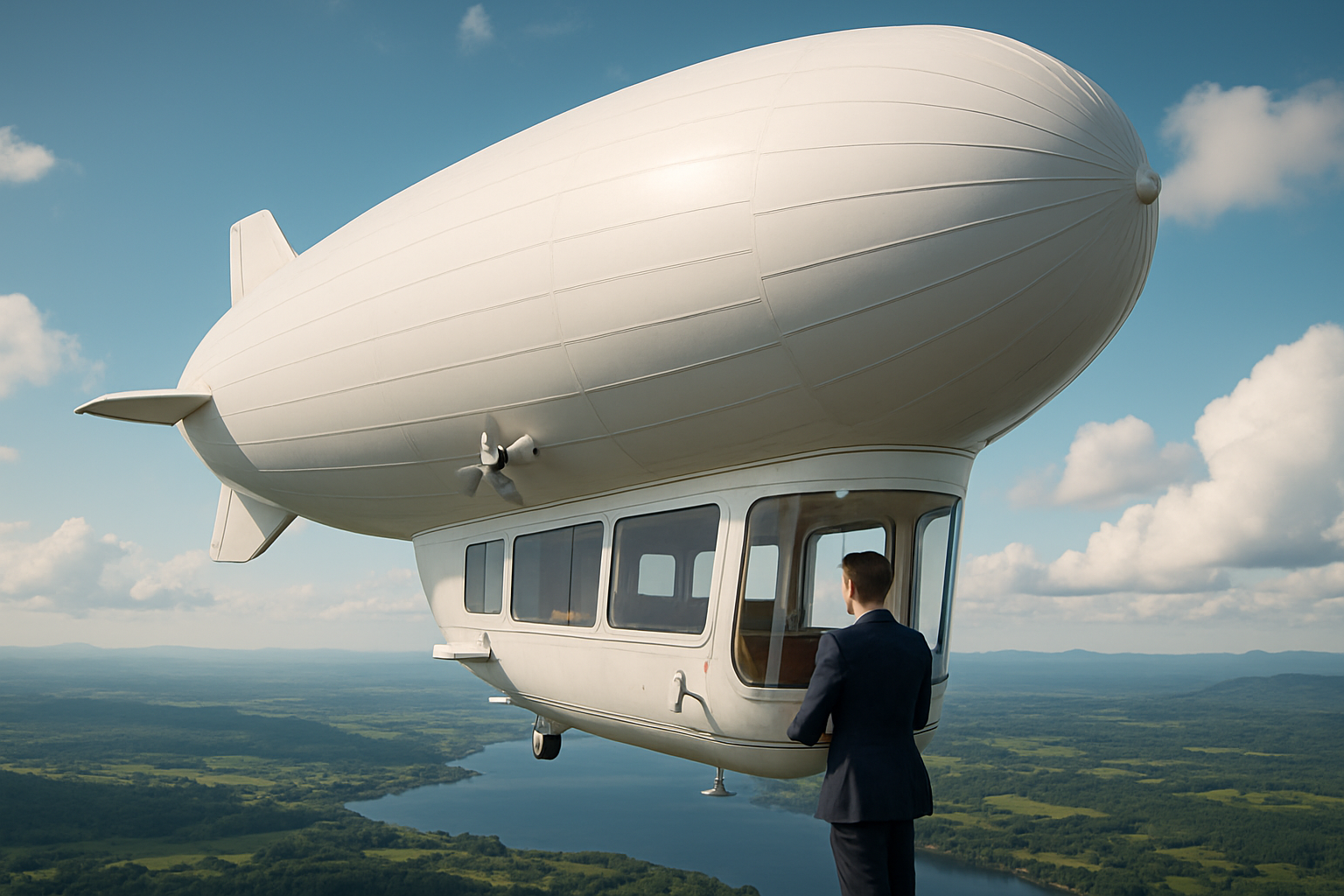Exploring the Wonders of Dirigible Tourism: A New Era of Aerial Adventure
Floating gracefully through the sky, dirigibles offer a unique perspective on travel that combines the romance of bygone eras with modern luxury. This emerging form of tourism promises breathtaking views, eco-friendly transportation, and an unparalleled sense of adventure. As travelers seek novel experiences, dirigible tourism is poised to revolutionize the way we explore our world from above.

Modern dirigibles utilize cutting-edge materials and safety systems, making them far more reliable than their predecessors. Helium, a non-flammable gas, has replaced the volatile hydrogen of the past, eliminating the risk of combustion. Innovative propulsion systems and weather monitoring technologies ensure smooth and safe journeys, even in challenging conditions.
A Luxurious Sky-High Experience
Dirigible tourism offers a level of luxury and comfort that surpasses traditional air travel. Unlike cramped airplane cabins, airships provide spacious interiors with panoramic windows, allowing passengers to enjoy 360-degree views of the landscape below. Gourmet dining experiences, comfortable lounges, and even private suites are becoming standard features on these floating hotels.
The slow pace of dirigible travel is part of its appeal, allowing travelers to savor the journey as much as the destination. Flights can last several days, creating opportunities for immersive experiences both on board and during ground excursions. This unhurried approach to travel aligns perfectly with the growing trend of slow tourism, where quality experiences take precedence over rushed itineraries.
Sustainable Skies: The Eco-Friendly Advantages
One of the most compelling aspects of dirigible tourism is its potential for sustainability. Airships consume significantly less fuel than traditional aircraft, resulting in a much lower carbon footprint. Some modern designs incorporate solar panels and electric propulsion systems, further reducing environmental impact.
The ability to take off and land vertically means dirigibles require minimal infrastructure, making them ideal for accessing remote or ecologically sensitive areas without causing damage. This opens up possibilities for responsible tourism in previously inaccessible locations, allowing travelers to explore pristine environments with minimal disruption to local ecosystems.
Reimagining Aerial Sightseeing
Dirigible tourism is redefining the concept of aerial sightseeing. Unlike helicopters or small planes, airships can hover silently over points of interest, providing extended viewing opportunities without noise pollution. This makes them perfect for wildlife observation, architectural tours, and geological surveys.
Imagine floating over the Serengeti during the Great Migration, observing ancient ruins from a new perspective, or witnessing the Northern Lights from the comfort of a sky lounge. Dirigibles offer a platform for unparalleled photography and videography, catering to both amateur enthusiasts and professional content creators.
Challenges and Future Prospects
Despite its potential, dirigible tourism faces several challenges. The industry is still in its infancy, with limited infrastructure and high operational costs. Weather dependence remains a concern, as strong winds can affect flight schedules and routes. Additionally, public perception and safety concerns stemming from historical accidents need to be addressed through education and demonstration of modern safety measures.
However, the future looks promising. Several companies are investing heavily in dirigible technology, with plans for regular tourist flights in the coming years. As the industry grows, we can expect to see more diverse itineraries, improved amenities, and possibly even transatlantic journeys reminiscent of the golden age of airship travel.
Sky-High Insights: What You Need to Know
• Dirigible flights typically cruise at altitudes between 1,000 and 3,000 feet, offering views unmatched by commercial airplanes
• Modern airships can reach speeds of up to 80 mph, though they usually travel at a leisurely 30-40 mph for optimal sightseeing
• Some dirigible tours offer “flight school” experiences, allowing passengers to learn about navigation and even take the controls under supervision
• Airships can stay aloft for days or even weeks, limited only by passenger comfort and supplies
• The largest modern dirigibles can accommodate up to 100 passengers, though most tourist-oriented vessels carry 12-30 for a more intimate experience
As we look to the skies for new travel experiences, dirigible tourism stands out as a unique blend of nostalgia and innovation. It offers a fresh perspective on familiar landscapes and the promise of reaching untouched corners of our planet. For those seeking a truly elevated travel experience, the gentle giants of the sky may well be the future of luxury adventure tourism.





